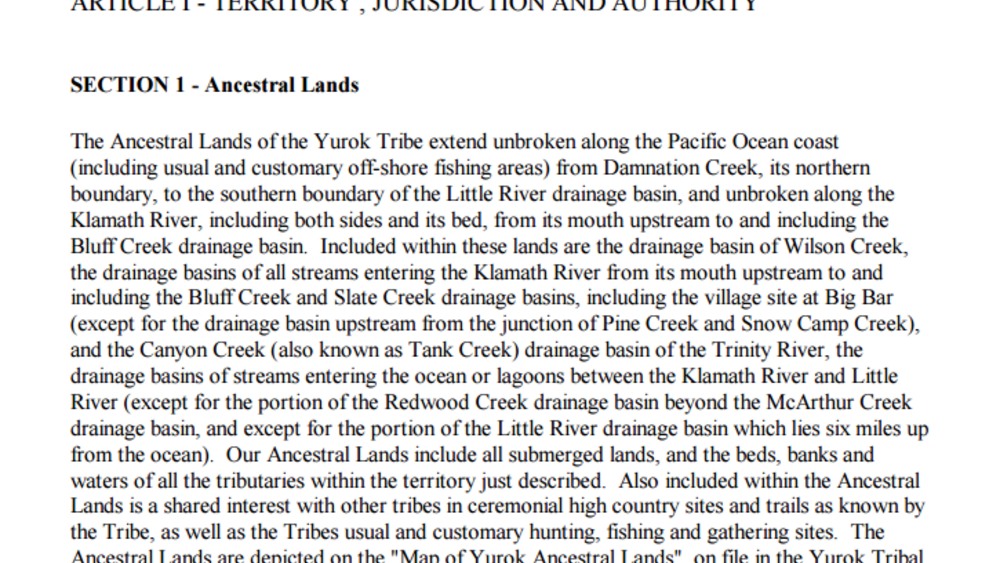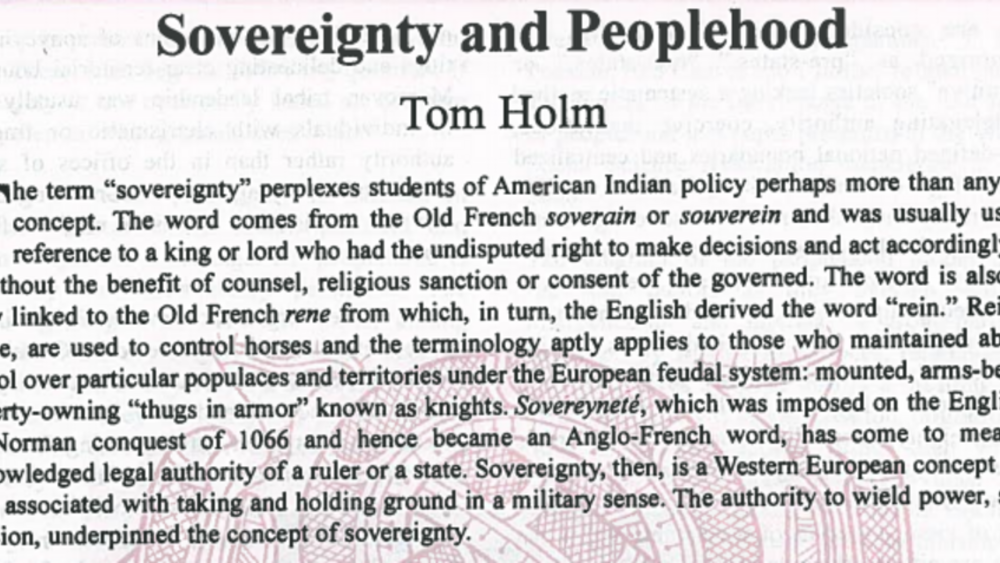Indigenous Governance Database
territory
Image

Yurok Tribe: Jurisdiction/Territory Excerpt
ARTICLE I - TERRITORY , JURISDICTION AND AUTHORITY SECTION 1 - Ancestral Lands The Ancestral Lands of the Yurok Tribe extend unbroken along the Pacific Ocean coast (including usual and customary offÂshore fishing areas) from Damnation Creek, its northern boundary, to the southern…
Thumbnail or cover image

Sovereignty and Peoplehood
The term "sovereignty" perplexes students of the American Indian policy perhaps more than any other concept. The word comes from the Old French soverain or souverein and was usually used in reference to a king or lord who had the undisputed right to make decisions and act accordingly with or…
